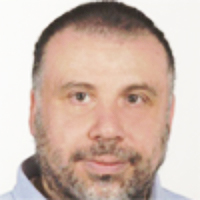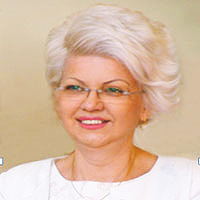Cytomegalovirus pneumonia and Cryptogenic organizing pneumonia following pediatric stem cell transplantation for leukemia
Published on: 12th September, 2017
OCLC Number/Unique Identifier: 7355939062
Background: Knowledge of pulmonary complications (PCs) in children after hematopoetic stem cell transplantation (allo-HSCT) is limited; most data are from adult studies.
Case: We describe a 8 year old girl with high risk acute myeloid leukemia who developed graft versus host disease (GVHD) on Day 20, Cytomegalovirus (CMV) pneumonia on Day 50 and Cryptogenic organizing pneumonia (COP) on Day 170 after allo-HSCT.
Discussion: Cryptogenic organizing pneumonia is a rare noninfectious PCs that can be idiopathic or have several risk factors as a secondary causes, such as viral respiratory infections, drugs, GVHD and allo-HSCT. Viral respiratory infections and alloimmune lung syndromes have been reported in a few patients who have undergone transplantation.
Conclusion: Transplant physicians should be kept in mind for the development of alloimmune lung syndrome in the form of COP following CMV pneumonia in patients after allo- HSCT
Successful management of disseminated Fusarium infection in a patient with acute myeloid leukemia
Published on: 17th September, 2018
OCLC Number/Unique Identifier: 7877981809
Background: Invasive fungal infections cause significant morbidity and mortality in patients with hematologic malignancies and in recipients of hematopoietic stem cell transplantation.
Case: We report a patient with relapsed acute myeloid leukemia who developed disseminated Fusarium infection during the neutropenic period following the salvage cycle of chemotherapy given at King Fahad specialist Hospital in Dammam, Saudi Arabia. The invasive fungal infection was successfully managed with a combination of voriconazole and liposomal amphotericin-B.
Discussion: Fusarium species can cause invasive infections that may become disseminated and life-threatening in patients with acute myeloid leukemia.
Conclusion: Combined antifungal therapy and recovery of neutrophil count are essential to control invasive Fusarium infections
Pure Erythroid Leukemia: The Sole Acute Erythroid Leukemia
Published on: 11th July, 2017
OCLC Number/Unique Identifier: 7317598453
Pure Erythroid Leukemia (PEL) is an aggressive and exceedingly rare form of acute leukemia. In the 2008 WHO classification PEL was one of the subtypes of acute erythroid leukemia the other subtype being erythroleukemia (erythroid/ myeloid). In the 2016 WHO classification update, erythroleukemia was merged into myelodysplastic syndrome and PEL now is the only type of acute erythroid leukemia.106 cases of acute myeloid leukemia were diagnosed in 28 months in children’s hospital Lahore and PEL constituted 0.94%. Diagnosis of PEL is made by the bone marrow morphology showing predominant Immature erythroid precursors (proerythroblastic or undifferentiated), Periodic Acid- Schiff staining and immunophenotyping. In PEL no specific genetic mutations have been described but complex karyotypes and TP53 mutations are frequently noted. Future collaborative studies to identify the molecular defects will contribute to the development of targeted therapies that might improve the prognosis.
Correlation of plasma protein from MDS, young and elderly patients by SDS-page
Published on: 11th November, 2019
OCLC Number/Unique Identifier: 8330254423
Summary: Myelodysplastic Syndrome (MDS) is a heterogeneous group of clonal hematopoietic malignancies characterized by progressive cytopenias, ineffective hematopoiesis, bone marrow hypercellularity and transformation to acute myeloid leukemia (AML).
Objectives: Identify plasma proteins from MDS patients and from two healthy controls groups (young and elderly) by SDS-Page.
Methods: Plasma from 08 healthy young, 08 healthy elderly and 08 MDS patients were used for this study. Proteins were fractionated, precipitated, used for SDS-PAGE gel analysis, stained with comassie brilliant blue, scanned and bands were analyzed.
Results: It was possible to identify in both, 20% fraction and supernatant, proteins that were differentially expressed in each group. The ones that have showed some clinical relevance. Fibronectin was highly expressed only in the young control group. α2-Macroglobulin was also expressed in both control groups, but it was not expressed in the MDS group. Haptoglobin was highly expressed only in the elderly control and SMD groups.
Conclusion: Protein expression in plasma can be a biomarker for MDS, and may play a key role in the process of aging and hematologic malignancies development.
Overlap of two unusual condition in childhood: hibernoma and central diabetes insipidus
Published on: 7th March, 2022
Central Diabetes Insipidus (CDI) results from the inability to secrete ADH secreted by the neurohypophysis system to control water-electrolyte metabolism. In the etiology of CDI in childhood, many congenital and acquired central nervous system (CNS) tumors (germinoma, pinealoma, craniopharyngioma, optic glioma, acute myeloid leukemia), infiltrative diseases (Langerhans cell histiocytosis, sarcoidosis), infections (meningitis, tuberculosis, encephalitis), autoimmune events, head trauma, idiopathic) can be responsible [1]. Hibernomas, which are very rare in childhood, may also rarely involve the central nervous system.
In the pursuit of a new route on acute myeloid leukemia treatment
Published on: 29th December, 2021
Acute myeloid leukaemia (AML) is the forefront disorder of the bone marrow among others that disrupt the normal production of blood cells and platelets. The bone marrow microenvironment or the bone marrow niche (BM niche) that orchestrates the proliferation and survival of Leukaemic stem cells (LSC) is the reason for relapse after complete remission and also chemotherapy drug resistance. As for most cancers oxidative phosphorylation, a fundamental mitochondrial process of energy production, is under focus for the treatment of AML and a novel strategy of targeting heat shock proteins appears as a promising route for further research.
The prognostic value of p53 and WT1 expression in cancer: new molecular insights and epigenetics explanations lead to a new medical hypothesis
Published on: 1st June, 2023
This is a literature review study focusing on the expression of p53 and WT1. Both the p53 and WT1 proteins are tumor suppressors, which means that they play a role in preventing the progression into cancerous ones. If these proteins are altered or deleted, they lose the ability to carry out their role, which might result in the development of cancer. The primary objectives of this study were to review the literature regarding the expression of both p53 and WT1 and to investigate their prognostic significance; and to discuss our new hypothesis regarding the ratios of expression of WT1/p53, as well as our model regarding acute myeloid leukemia. In brief, the objectives were to make the focus in the suggested hypothesis as well as collecting the supportive literature. According to the findings of the current research, the level of expression of WT1 and p53 can indicate either a favorable or unfavorable prognosis for cancer patients. Further, we demonstrated that the expression, not just as a quality variable but also as a quantity variable, may have a more substantial explanation in the progression of tumors than we had previously thought. According to the theory that was derived from this research, if the expression of WT1/p53 (the expression is given as a ratio) is somewhere around 4, then p53 acts as though it were wild type and offers protection against tumors. In order to verify this idea, we need to do additional study.
The Outcome of Patients with Leukemia Presenting with Hyperleukocytosis Requiring Leukapheresis. The Experience of King Fahad Specialist Hospital in Dammam, Saudi Arabia
Published on: 15th March, 2024
Background: Patients with acute and chronic leukemia presenting with hyperleukocytosis are at risk of developing leukostasis which has serious and life-threatening complications. Leukapheresis is usually performed to reduce the complications of leukostasis in patients presenting with hyperleukocytosis and clinical manifestations compatible with leukostasis. Methods and materials: A retrospective study of patients with acute and chronic leukemia who received leukapheresis for hyperleukocytosis between the 1st of January 2013 and the 31st of December 2023 at King Fahad Specialist Hospital (KFSH) in Dammam, Saudi Arabia was performed. Results: Over a period of 11 years, a total of 50 patients with acute and chronic leukemia presenting with hyperleukocytosis and clinical manifestations of leukostasis; 32 patients with acute leukemia (AL) and 18 patients with chronic myeloid leukemia (CML); received leukapheresis at our institution. Among the 32 patients with AL who received leukapheresis, 24 patients (75%) had acute myeloid leukemia (AML), 7 patients (21.88%) had acute lymphoblastic leukemia (ALL) and 1 patient (3.13%) had bilineage acute leukemia (BAL). At presentation of their AL: 3 patients (9.38%) had fever, 9 patients (28.13%) had infections, 4 patients (12.5%) had palpable spleen or liver, 6 patients (18.75%) had palpable external lymph nodes, and 9 patients (28.13%) had extramedullary disease (EMD). After receiving induction and consolidation cycles of chemotherapy, 11 patients (34.38%) of AL patients received allogeneic hematopoietic stem cell transplantation (HSCT). At the end of the follow-up, 17 patients (53.1%) with AL were alive while 15 patients (46.9%) were dead. The 8-year overall survival (OS) for all patients with AL subjected to leukapheresis was 47%. The 5 years OS for patients with AL who subsequently received HSCT and those who did not receive allogeneic HSCT were 70% and 40% respectively. The mean white blood cell (WBC) count of CML patients subjected to leukapheresis was 465.5 × 109/L, 11 patients (61.11%) had clear signs of leukostasis, and 8 patients (44.44%) had splenomegaly at presentation. Regarding the disease stage at presentation, 14 CML patients (77.78%) had chronic phase (CP), 2 patients (11.11%) had accelerated phase (AP) and 2 patients (11.11%) had blast phase (BP). Regarding the fate of CML patients at the end of the study were: 15 (83.33%) were alive, 1 (5.56%) dead, and 2 (11.11%) were unknown as they lost follow-up. However, the 10-year OS of patients with CML subjected to leukapheresis was 90%. Conclusion: Patients with acute or chronic leukemia presenting with hyperleukocytosis and either ongoing or impending leukostasis should have urgent cytoreductive chemotherapy and leukapheresis to prevent life-threatening complications. Although the outcome of AL patients presenting with leukostasis is generally poor, prompt cytoreductive therapy and leukapheresis, followed by induction chemotherapy and allogeneic HSCT may improve the outcome. Also, urgent cytoreduction including leukapheresis improves the outcome of patients with CML presenting with hyperleukocytosis and leukostasis.
Assessment of Redox Patterns at the Transcriptional and Systemic Levels in Newly Diagnosed Acute Leukemia
Published on: 29th April, 2024
Background: Acute leukemia is the result of clonal transformation and proliferation of a hematopoietic progenitor giving rise to poorly differentiated neoplastic cells. Reactive oxygen species play a role in maintaining the quiescence, self-renewal, and long-term survival of hematopoietic stem cells, but it is unclear how they would affect disease onset and progression. The aim is to evaluate, at the transcriptional and systemic level, the oxidative-inflammatory status in newly diagnosis acute leukemia patients. Methods: Seventy acute leukemia patients [26 acute lymphoblastic leukemia (ALL), 13 Acute Promyelocytic Leukemia (APL), and 31 Acute Myeloid Leukemia (AML)] and forty-one healthy controls were analyzed. Malondialdehyde and catalase activity were evaluated. Gene expression of NRF2, SOD, PRDX2, CAT, IL-6, and TNF-α was analyzed by real-time PCR.Results: Malondialdehyde concentration was similar in all groups studied. Catalase activity was significantly higher in AML and APL patients compared to controls, while ALL showed similar activity to the healthy group. NRF2, CAT, and PRDX2 expression levels were similar between groups, SOD expression was downregulated in all acute leukemia patients. TNF-α expression was lower in AML groups than in healthy individuals, and IL-6 mRNA expression was downregulated in ALL and APL.Conclusion: This is the first report that correlates transcriptional and systemic parameters associated with the oxidative inflammatory status in newly diagnosed acute leukemia. Some of the parameters evaluated could be used as biomarkers in the selection of an effective therapeutic strategy and will open new directions for the follow-up and evolution of this disease.
The Outcome of Outpatient Intermediate and High Dose Cytarabine Consolidation Chemotherapy in Patients with Acute Myeloid Leukemia. The Experience of King Fahad Specialist Hospital in Dammam, Saudi Arabia
Published on: 9th May, 2024
Background: Adult patients with Acute Myeloid Leukemia (AML) have traditionally been hospitalized for the duration of intensive consolidation chemotherapy until blood count recovery to avoid complications. Recently, there has been a trend to shift the care of AML patients treated with intensive chemotherapy from inpatient to outpatient settings to reduce treatment costs and save beds. Methods and materials: A retrospective study of AML patients who received cytarabine consolidation chemotherapy between the 1st of August 2016 and the 31st of December 2023 at King Fahad Specialist Hospital in Dammam, Saudi Arabia was performed. Results: Over a period of 7 years and 4 months, 62 patients received a total of 127 cycles of intensive consolidation chemotherapy at outpatient setting. At diagnosis: 12 patients had extramedullary disease, and 17 patients had adverse cytogenetic abnormalities. Following the 127 cycles of chemotherapy, 38 episodes of febrile neutropenia were encountered, and 46 hospital admissions were required. No complications were encountered following 62.2% of the cycles of consolidation therapy and no early mortality due to intensive consolidation therapy was reported. Out of 62 patients studied, 36 patients underwent various forms of hematopoietic stem cell transplantation. Disease relapses were encountered in 24 patients and the 5-year incidence of relapse for the entire group of patients was 42%. The 5-year leukemia-free survival for the: entire study patients, transplanted patients, and non-transplanted patients were: 43%, 38%, and 50% respectively. The 5-year overall survival for the: entire study patients, transplanted patients, and non-transplanted patients were: 44%, 34%, and 65% respectively. At the end of follow-up: 37 patients (59.68%) were alive, 24 patients (38.71%) were dead, and the fate of 1 patient (1.61%) was unknown as the patient moved to another hospital. Conclusion: Administration of intensive consolidation chemotherapy for patients with AML at outpatient setting is safe, feasible, and cost-effective. The incidence of infectious complications was relatively low. No early treatment-related mortality due to intensive consolidation therapy was encountered. Outpatient administration of intensive consolidation therapy can save beds, reduce hospital costs, and is associated with short-term and long-term outcomes that are comparable to inpatient administration of consolidation therapy.
















